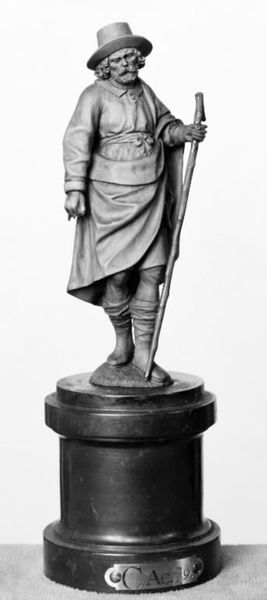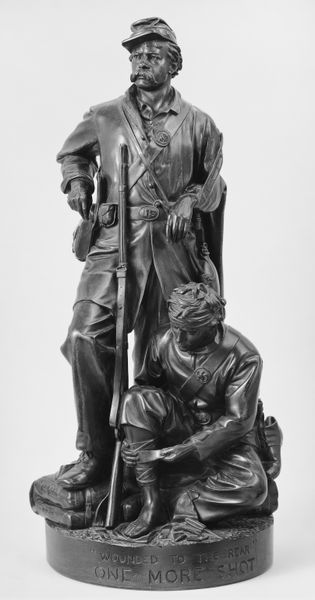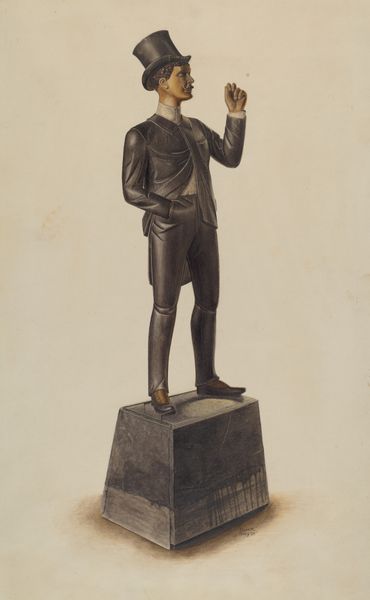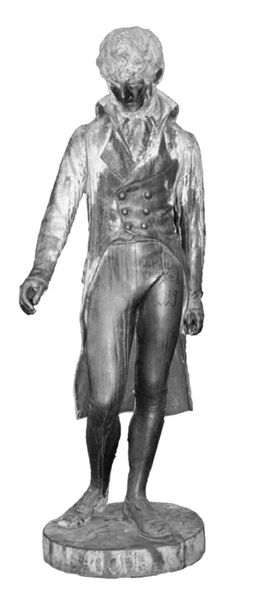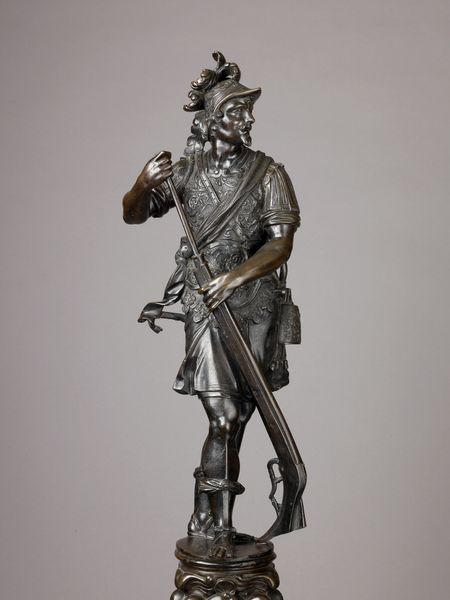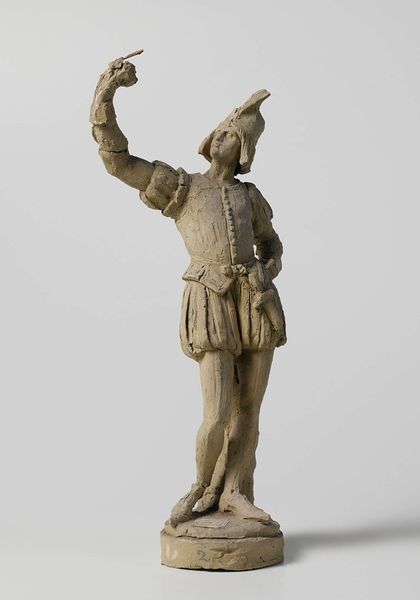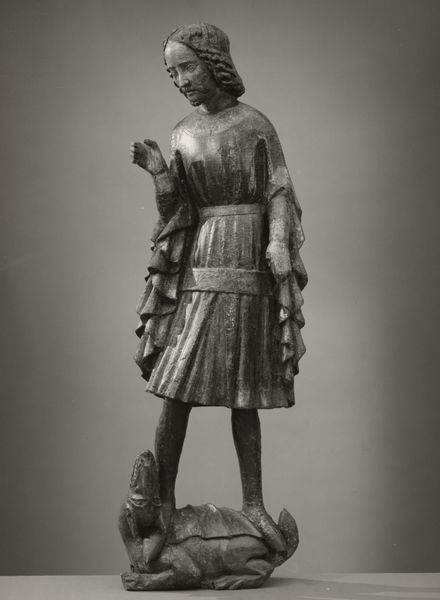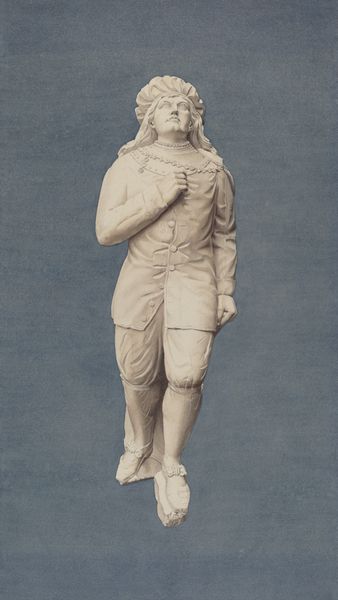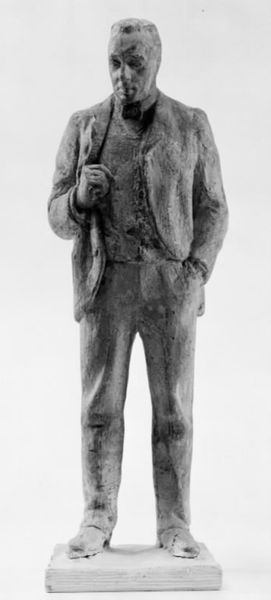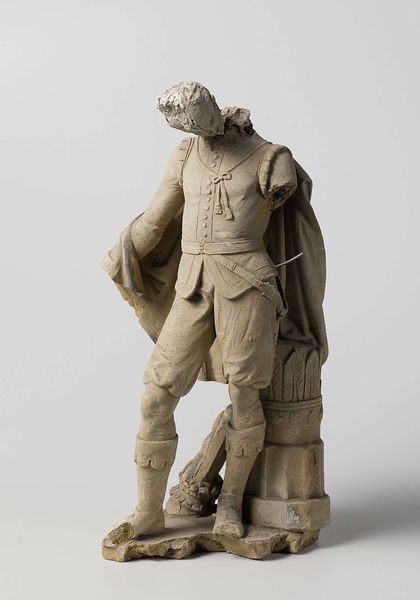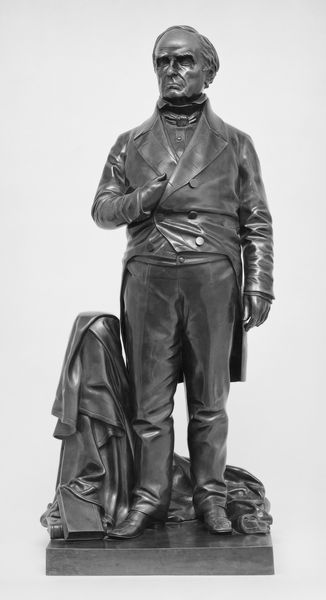
sculpture, marble
#
portrait
#
figuration
#
sculpture
#
romanticism
#
history-painting
#
marble
Dimensions: 220 cm (height) (Netto)
This is H.W. Bissen's "A Victorious Danish Soldier," a sculpture rendered in a pale stone, perhaps marble. Here, the soldier stands in the glory of triumph; a sprig of leaves or flowers is held aloft in his right hand, while his left firmly grasps his rifle. His right foot rests upon a cannon, a classical trope of victory. These motifs ripple through time: the raised hand, a gesture seen in ancient Roman art, signifies power, while the sprig held aloft is a symbol of peace, of civilization, emerging from conflict. We see echoes of this in Delacroix’s Liberty Leading the People; a raised arm becomes a beacon of revolution. The sprig, too, finds iterations, evolving into laurels, palms, and other symbols of honor, signifying a return to harmony. Consider how these symbols are internalized; the victorious soldier represents not just military might but the collective subconscious desire for peace after struggle. These visual ideas—of dominance and resolution—resonate across epochs, revealing our shared psychological landscape.
Comments
statensmuseumforkunst almost 2 years ago
⋮
Bissen pays homage to the Danish foot soldiers (privates) from the war in 1848-51, where the Danish government prevented the duchies of Schleswig and Holstein from leaving the Kingdom of Denmark. The sculpture springs from the same political soil as the landscape paintings from the period and is fuelled by the same nationalist sentiments. The sculpture marks the first time in European history that a memorial to military victory did not show a goddess, a general, or a monarch, but a simple, anonymous soldier from the battlefields. However, the figure’s face bears a striking resemblance to the painter Johan Thomas Lundbye, who fell in the war. The sculpture is a preliminary study for the war memorial commemorating the battle at Fredericia in 1849; the monument was erected in 1858.
Join the conversation
Join millions of artists and users on Artera today and experience the ultimate creative platform.

